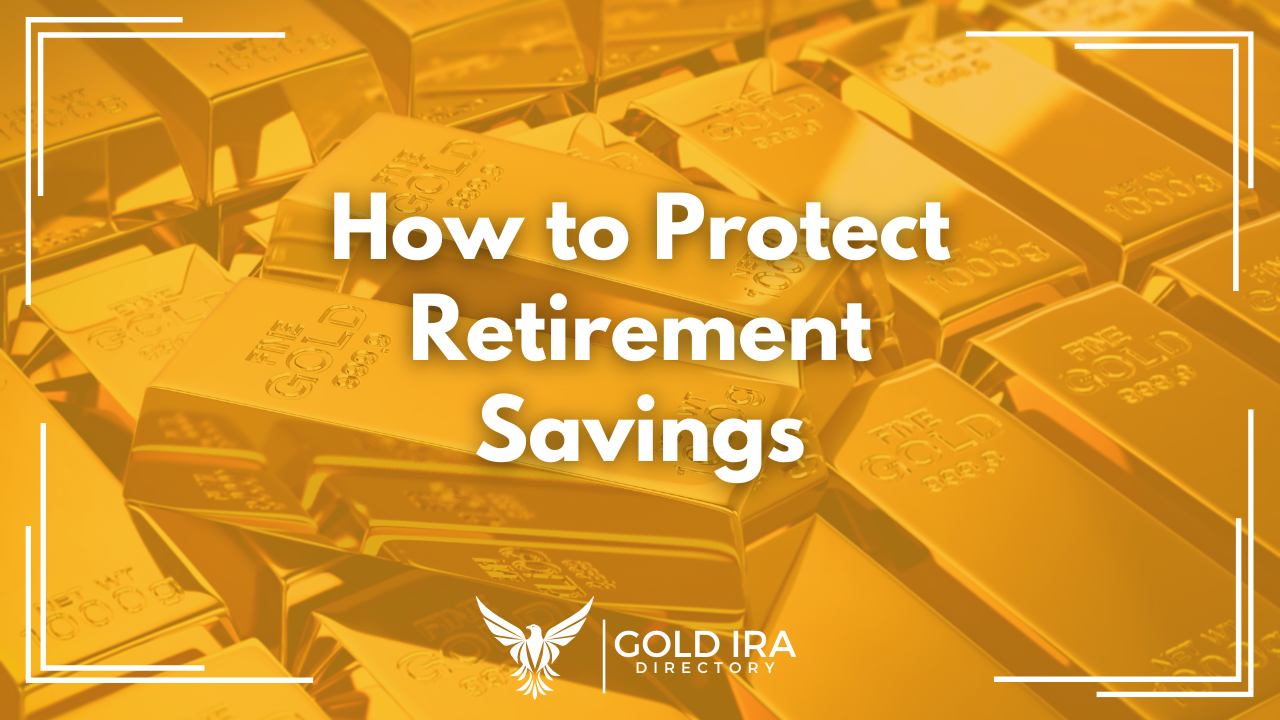How to Protect Retirement Savings

Are you worried your retirement savings might be at risk?
It’s okay to feel skeptical when there are literal wars going on. In the current geopolitical climate, many investors are flocking to gold.
This post will cover the reasons why and how you can also add gold safely to your portfolio:
Consider Investing With Our #1 Ranked Gold IRA Company:
Augusta Precious Metals Best Gold IRA Company 2025
Why Investors Use Gold to Protect Their Retirement Savings:
1. Flight to Safety — Gold as Emotional Insurance
When volatility hits—think stock market crashes, war outbreaks, or major political instability—investors often enter “risk-off” mode. That means they pull money out of riskier assets (like equities or emerging markets) and move it into safe-haven assets. Gold is one of the oldest and most trusted of these.
Why?
- Gold holds intrinsic value—it’s not tied to corporate earnings, debt, or geopolitical boundaries.
- It doesn’t default or go bankrupt.
- It has a history of preserving wealth during uncertainty.
Example: During the 2008 financial crisis, while banks were collapsing and stocks were tumbling, investors turned to gold, and its price surged by more than 30% within a year.
👉 My Insight: If we expect heightened geopolitical tension or signs of systemic risk, allocating a portion of the portfolio to gold can act as a stabilizer.
2. Inflation & Interest Rate Expectations — Gold vs Central Banks
Volatile markets often come with speculation around what central banks (like the Federal Reserve) will do next. If markets are falling, inflation is rising, or growth is slowing, central banks may:
- Lower interest rates
- Print more money (quantitative easing)
Both moves tend to weaken the currency, particularly the U.S. dollar.
Why does this matter for gold?
- Gold is priced in USD, so a weaker dollar makes it cheaper for international buyers—demand goes up.
- Lower interest rates reduce the appeal of interest-bearing assets like bonds, making non-yielding assets like gold more attractive by comparison.
Example: In 2020, COVID led to massive stimulus and rate cuts. As inflation fears grew, so did gold—hitting all-time highs around $2,070 in August.
👉 My Insight: When we see inflation picking up or the Fed turning dovish, that’s typically bullish for gold. It acts as a store of value when paper money is losing purchasing power.
3. Currency Fluctuations — The Gold-Dollar See-Saw

Because gold is priced in dollars, changes in the USD have a direct impact on gold prices.
Here’s how it works:
- When the dollar weakens, gold becomes cheaper for foreign buyers (like in Europe, India, or China), which boosts global demand.
- When the dollar strengthens, the opposite happens—gold becomes more expensive overseas, and demand can dip.
Volatility in global markets often causes rapid shifts in currency strength, especially if investors believe the U.S. economy is about to slow or if other regions are tightening/loosening monetary policy faster than the U.S.
Example: During Brexit (2016), investors fled the British pound and euro, and gold surged as global currency uncertainty soared.
👉 My Insight: If we see a declining dollar trend or international tension affecting major currencies, gold demand may rise from abroad—supporting its price.
4. Liquidity Crises — Gold Gets Sold Too
This one surprises a lot of people: in extreme volatility, gold can temporarily drop even when it’s the “safe” asset. Why?
In liquidity crises, investors need cash—fast.
- If stocks are crashing, margin calls are triggered.
- If bond markets freeze, institutions might need to sell gold to cover shortfalls.
Example: In March 2020, at the peak of COVID panic, gold dropped sharply even though fear was rampant. Investors were scrambling for cash, and gold was one of the few things that could be sold quickly.
But shortly after, once central banks stepped in and liquidity returned, gold rebounded even harder—hitting record highs within months.
👉 My Insight: Short-term dips in gold during panic can be buying opportunities. These moves aren’t about fundamentals—they’re about fear and liquidity.
📉 Notable Instances When Volatility Moved Gold Prices
| Event | Date/Period | Impact on Gold |
| Global Financial Crisis | 2008–2009 | Gold surged from ~$700 to over $1,200 by end of 2009 due to market panic and stimulus. |
| European Debt Crisis | 2010–2012 | Uncertainty led gold to peak at ~$1,900 in 2011. |
| Brexit Referendum | June 2016 | Gold spiked ~$100 in a day as markets plunged. |
| COVID-19 Pandemic Crash | Mar 2020 | Initial dip in gold (liquidity-driven), followed by a sharp rally to record highs (~$2,070) by August 2020. |
| Russia-Ukraine War Start | Feb–Mar 2022 | Gold surged above $2,000 due to geopolitical fear and inflation concerns. |
| US Banking Crisis (SVB collapse) | March 2023 | Gold rose as investors feared broader systemic risks and rate cuts. |
Conclusion
A recent media report said that Gold is expected to hit $3100 this year. That’s just an indication of what investors are thinking globally.
Keep in mind that it’s always best to consult a financial advisor before making any major decisions.


